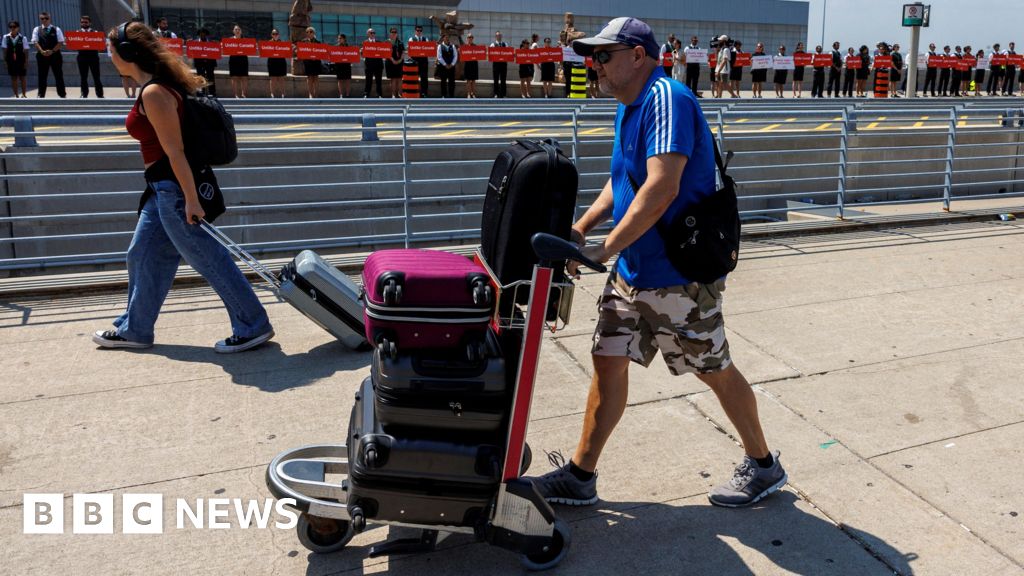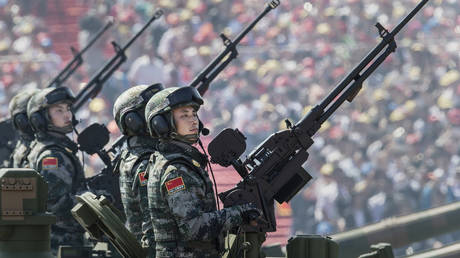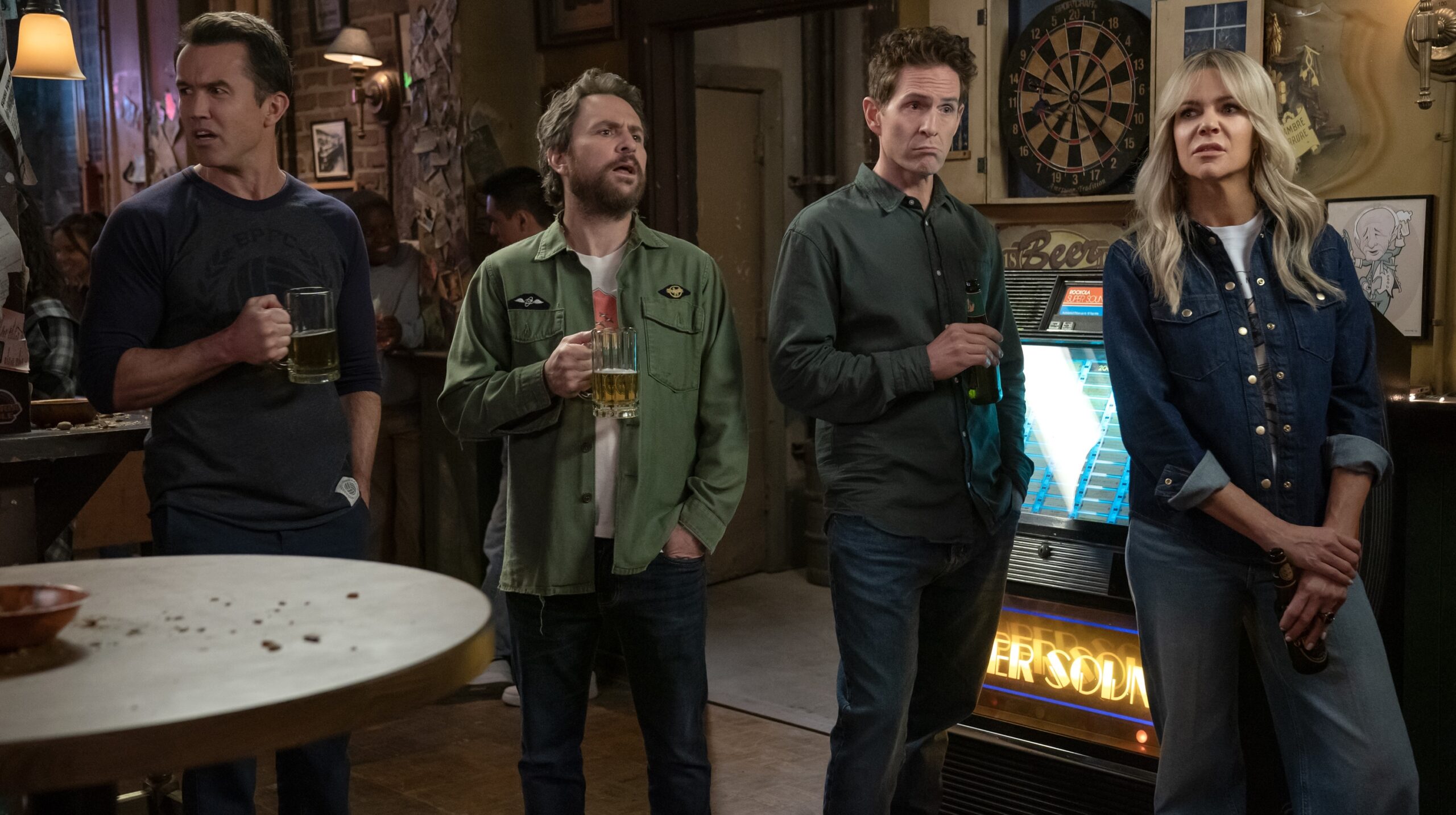How the Meatpacking District became NYC’s most walkable neighborhood
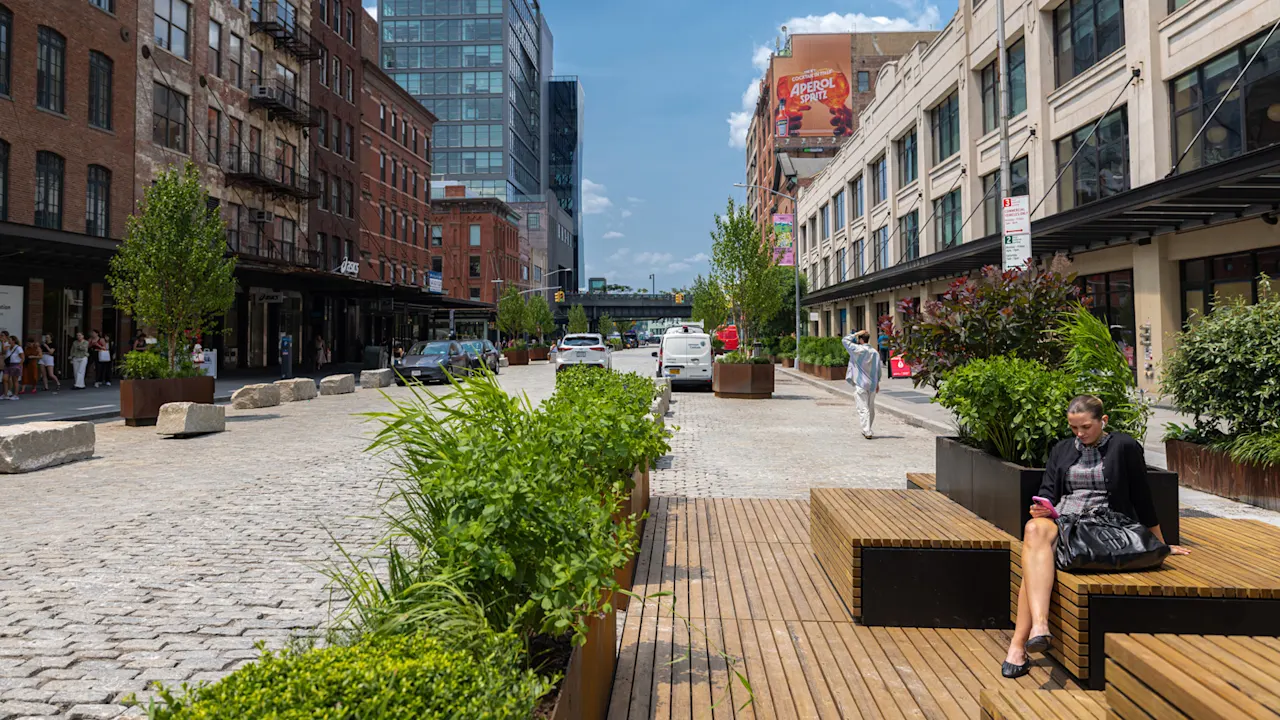
Jeffrey LeFrancois, executive director of the Meatpacking District Management Association, the neighborhood’s business improvement district, has a mantra about urban life. “If the city’s not changing, the city’s not healthy,” he says as he strolls down the 14th Street Promenade, the name for two pedestrianized blocks of the crosstown street that the BID inaugurated in June.
Taking the place of parked cars are five curbside decks, each measuring around 18 feet long, furnished with public seating; tall trees in weathered steel planters that bookend loading zones; and granite boulders that pinch the roadway into two lanes. LeFrancois crosses the street from deck to deck in order to show me the ideological shift that these interventions represent: pedestrians rule the road.
Elsewhere in the Meatpacking District—roughly eight square blocks bounded by 14th street to the north, Gansevoort street to the south, Hudson street to the East, and Hudson River Park to the west—there is ample evidence of the power shift that has been taking place on the streets: lots of seating streets with colorful murals on the pavement, and landscaping that offers a leafy buffer between busy thoroughfares and bustling plazas where people are drinking coffee, taking phone calls, and meeting friends.
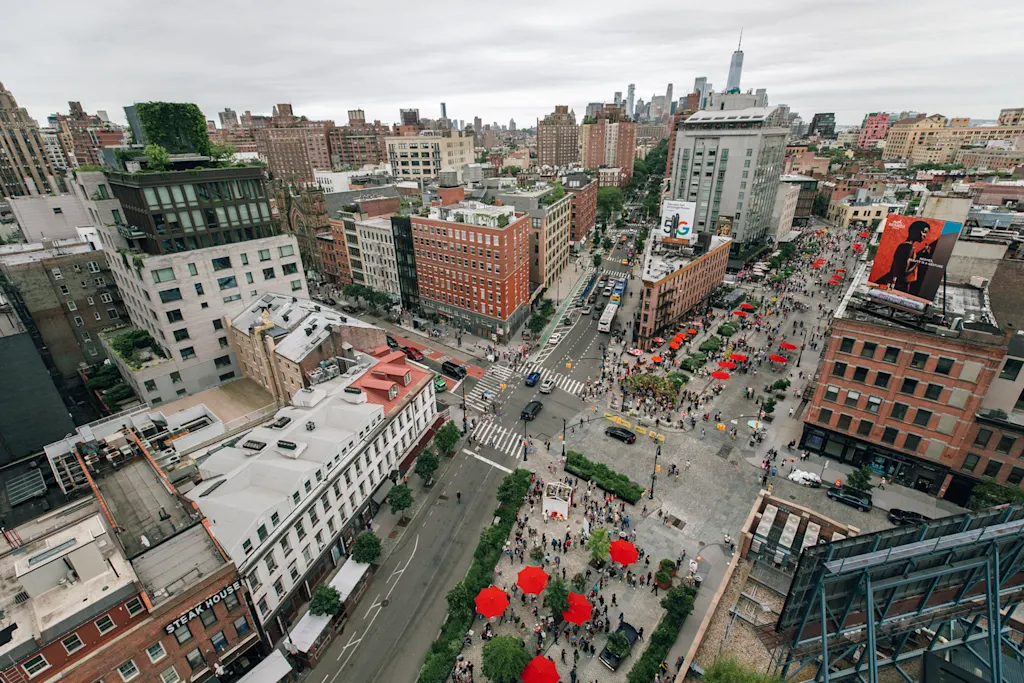
The neighborhood is unrecognizable from 30 years ago, when delivery trucks for slaughterhouses rumbled down the road, carcasses hung from loading dock awnings, and it was the center of queer nightlife.
While its high-end retail, influencer-filled restaurants, and luxury condos are the most visible elements of the Meatpacking District’s transformation into a mixed-use shopping and culture destination, its pedestrianized streets and public spaces have steadily become the most powerful. And the most ambitious.
The district bills itself as the first pedestrian-priority neighborhood in New York City and has been among the most ambitious in adopting experimental streetscape ideas. The neighborhood today proves that prioritizing walkability and deemphasizing driving is a winning formula for a balanced public realm and offers an example of what could be achieved elsewhere in the city when the right forces align.
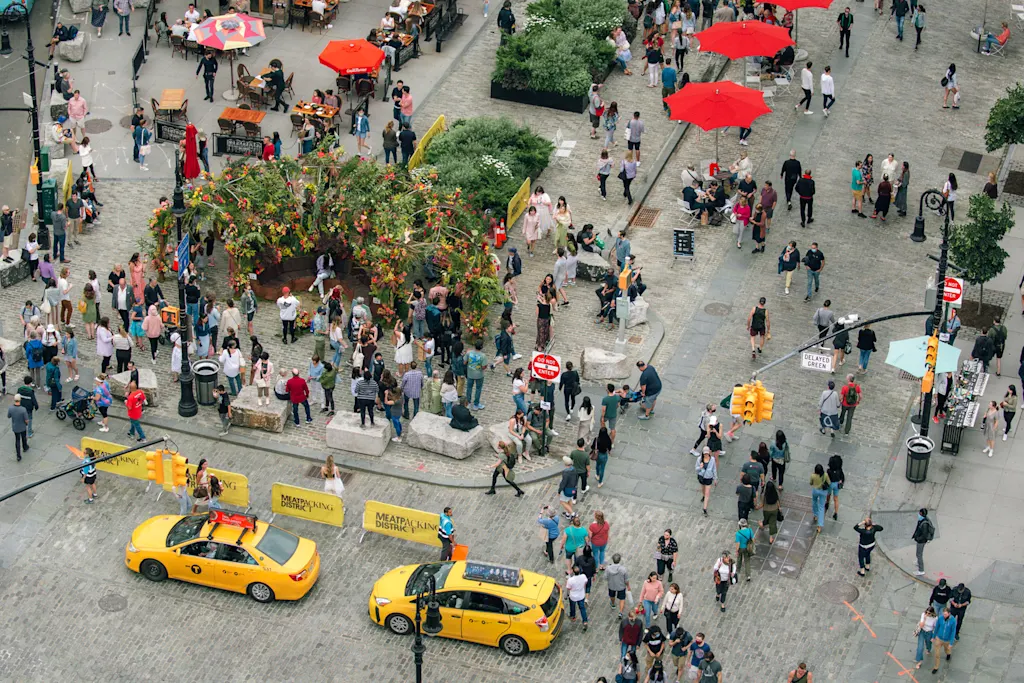
Designing a ‘Pedestrian Priority District’
The Meatpacking’s European-style pedestrian turn is a response to new development in and around the area that has increased the volume of foot traffic tremendously. “Not to match that on our streets is a missed opportunity,” LeFrancois says.
The Whitney Museum opened in 2015 and now sees one million visitors annually, up from 300,000 to 350,000 guests per year when it was on Madison Avenue. Little Island, which opened in 2021, attracts 1.5 million visitors a year. Then 2023 saw the opening of Gansevoort Peninsula, a 5.5-acre expansion to Hudson River Park, and Pier 57, a market hall with a popular rooftop park. These destinations joined the High Line, which opened in 2009 and now receives eight million visitors a year.
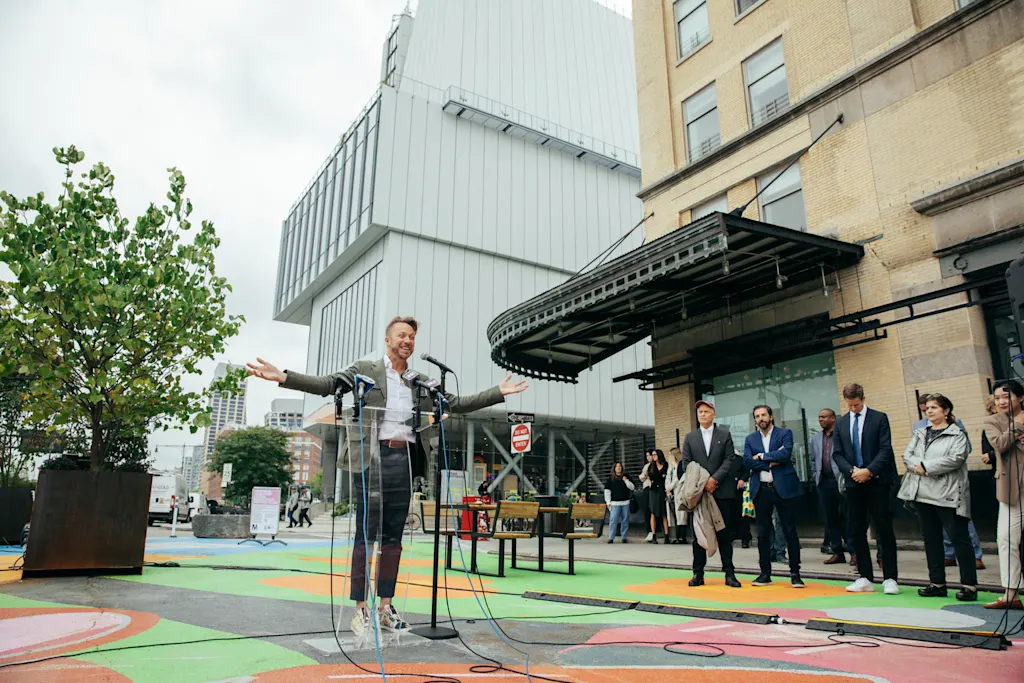
Not only is the Meatpacking District a destination in and of itself, it’s also a space people walk through on their way from the subway to these new public spaces on the west side. And the BID wants to entice these walkers to linger—and spend a few bucks while they’re at it.
“It’s all about flow, porosity, and access,” Le Francois says of the heart of the strategy. “We see that as a major driver for why people want to be here . . . It’s not just a one-off visit that we want to have happen; we want to make sure people are thinking about their return as well.”
This philosophy has driven incremental streetscape improvements that began as temporary tactical measures before becoming permanent fixtures. This included leveraging the Bloomberg-era plaza program to reclaim traffic lanes along Ninth Avenue for public space, a process that began with barricades before leading to a $28 million capital project that was completed in 2019.
In collaboration with DOT and the landscape architecture firm Ken Smith Workshop, the BID widened sidewalks, installed 40 movable planters that measured 10-by-5 feet each, furnished plazas with hundreds of chairs and dozens of tables, and integrated smooth granite slab bike paths down the center of the cobblestone street.
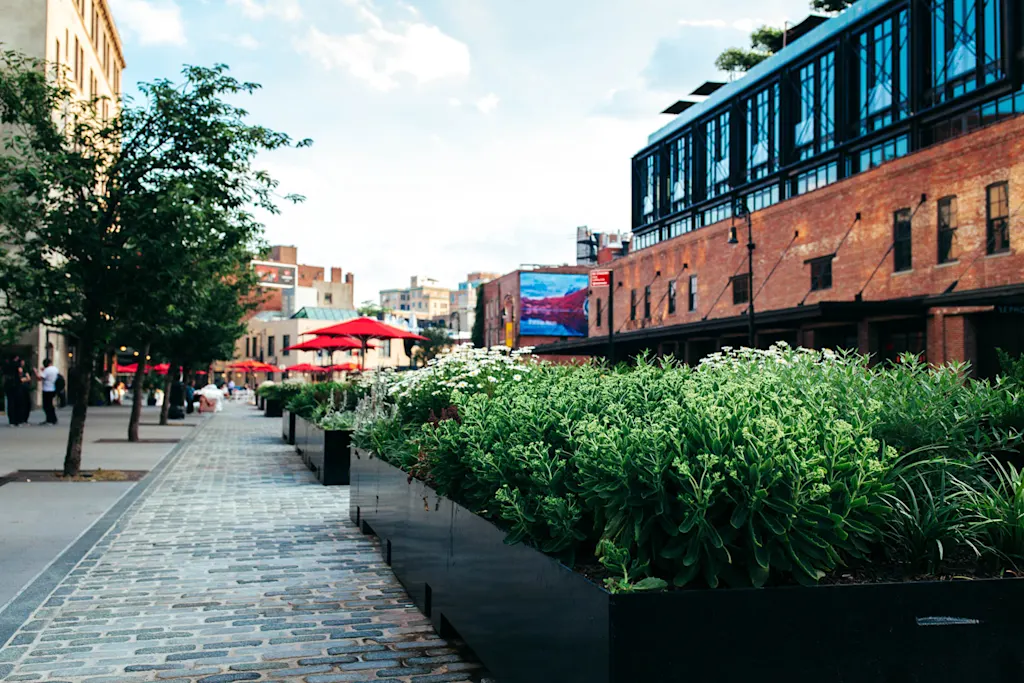
Then, in late spring of 2020, after becoming one of the first neighborhoods to participate in the city’s Open Streets program, the District began studying how it could become a true pedestrian-priority neighborhood.
LeFrancois and his team had already been thinking about how to build off of the successful plaza program but the pandemic, and the sudden citywide interest in rethinking public space through programs like open streets and outdoor dining “provided the flash point, the water in the hot pan to allow it to happen,” he says.
All of this culminated in the 2022 Western Gateway Public Realm Action Plan. Developed by the design firm WXY and TYLin, the plan identified opportunities to rightsize the neighborhood’s infrastructure for the wide array uses it now sees: pedestrians, buses, cyclists, delivery vehicles, taxis and ride-sharing, and personal cars.
David Vega-Barachowitz, an associate principal at WXY, says that as New York City districts like the Meatpacking transition from industrial use to a mixture of uses, infrastructure plans have “privileged patterns of movement that are out of date or misaligned with policy priorities, but also ossified this very autocentric perspective on how we think about streets.” While land use and movement patterns have changed, streets haven’t kept pace.
The Public Realm Action Plan’s suggestions included building a new crosswalk where Gansevoort Street meets the West Side Highway; pedestrianizing east-west streets in the neighborhood; making 10th Avenue, which remains the most industrial of the neighborhood’s streets and serves as a back-of-house, more pleasant to walk down; and untangling the intersection between 14th street and 10th Avenue since it’s a major crossing to Hudson River Park.
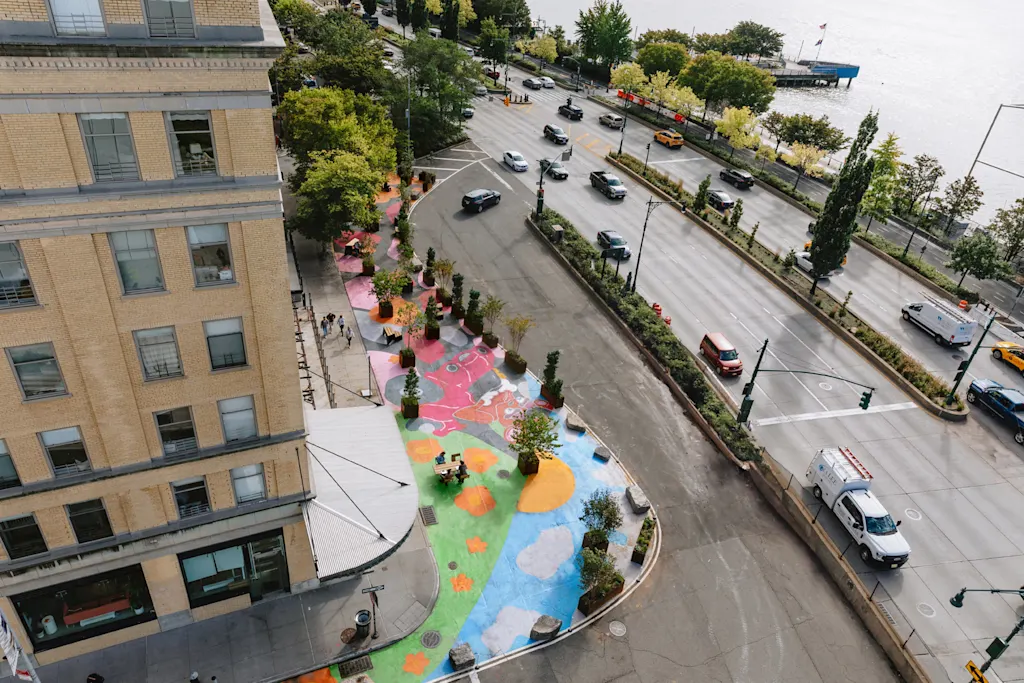
It’s “rethinking the right of way in a more comprehensive way,” says Lian Farhi, a senior associate and director of urban planning and design at TYLin.
Many of these projects have been completed or are underway. In late 2023, the new crossing across the West Side Highway at Gansevoort Street opened as did Gansevoort Landing, a pedestrianized portion of 10th avenue between the Whitney Museum and the new crossing.
“We call it a landing because it’s on the edge of the West Side highway,” LeFrancois says. “It’s not the most appealing place to spend time and sit and have a cup of coffee, but when you leave the museum and you see this nice little respite with seating, maybe you’re going to open your map for five minutes then figure out where to go. People will utilize weird spaces if you give them the chance to do so.”
And this emphasis on a good experience works. Claire Weisz, a founding partner of WXY, frequently visits outdoor events in the neighborhood and notices similar conversations happening.
“I literally overhear people saying, ‘I come here now because nothing like this in the city,’” she says. “And very rarely do they say, ‘because there’s no cars,’ right? But they’re implying it in the way they say it . . . Meatpacking is just such a great poster for why you should consider not letting cars just do whatever they want in any district. It was really brave of them.”
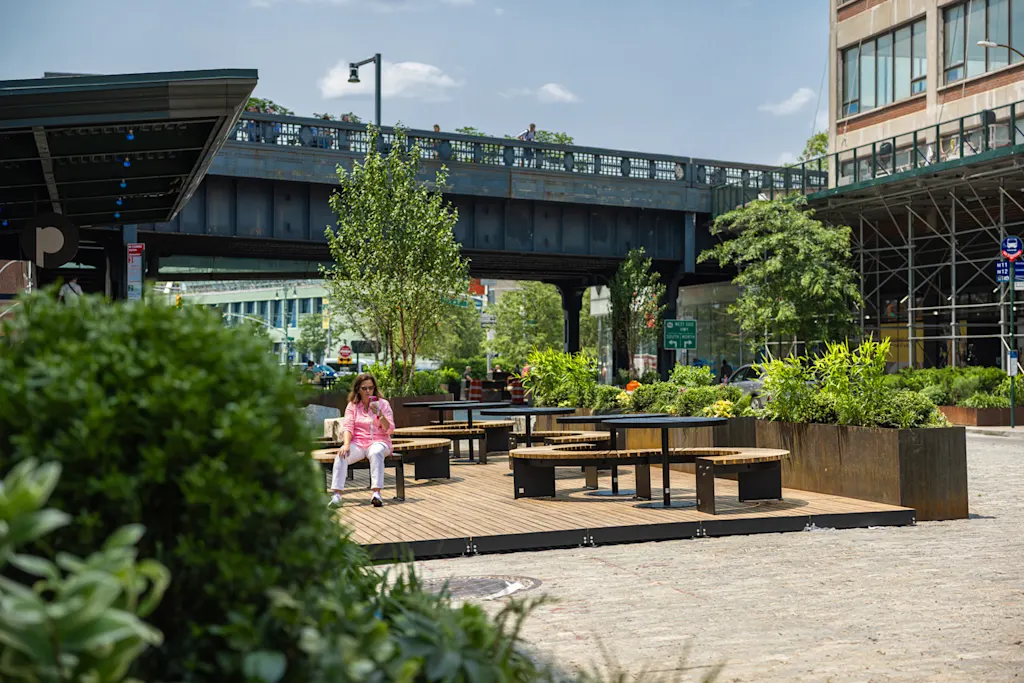
A Cohesive Neighborhood Vision
To redesign the neighborhood, the BID works step by step, tackling small projects one by one so that the whole will be “radically transformative,” LeFrancois says. And now the district is at a point where pedestrians can experience the result.
It’s an approach that has involved figuring out which city policies and programs it can leverage, then working closely with the myriad stakeholders in the neighborhood—businesses, cultural institutions, community boards, preservation groups, city council offices, developers—and aligning them on a vision.
It helps that it’s an attractive one. In 2022, Street Plans and TYLin developed a tactical materials catalog for streetscape improvements. “The biggest question for us was how do we create pedestrian spaces that respond to the city and to the material fabric of the neighborhood?” says Veronica Rivas Plaza, a senior project designer at Street Plans.
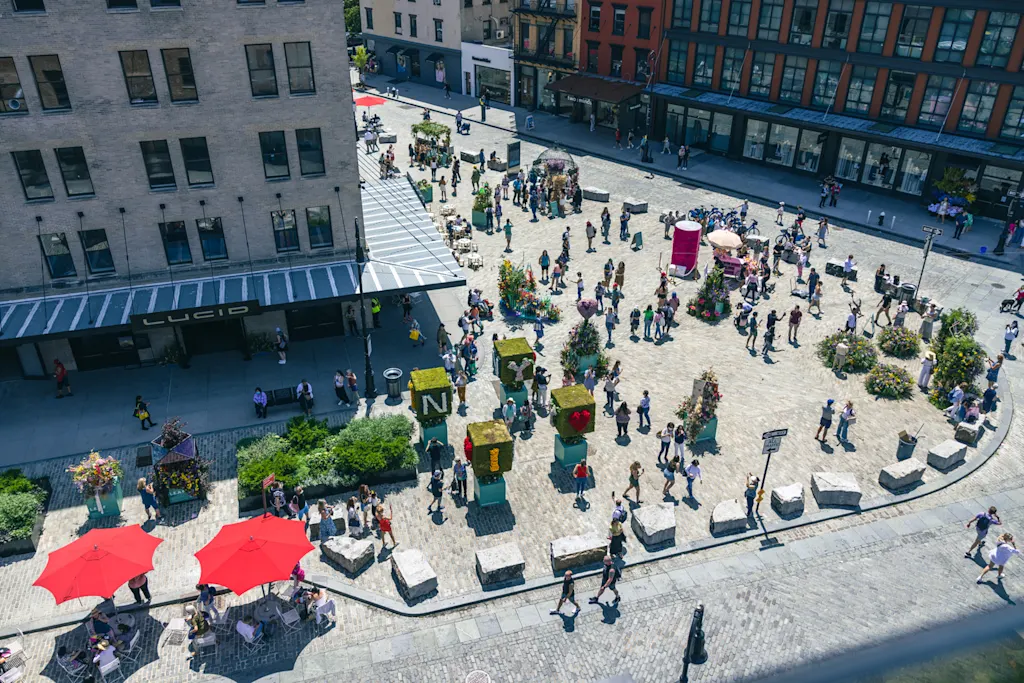
These landscape elements reference the neighborhood’s architecture and history—think durable natural materials with an industrial finish like steel, wood, and stone—and help beautify and unify the interventions, from temporary installations all the way to permanent fixtures.
To wit: the blackened steel, wood decks, and lounge chairs that comprise installations within the 14th Street Promenade, custom built by the Nordic outdoor furniture maker Vestre, nod to the High Line’s language.
The BID looked to three DOT programs to develop the promenade. The Curb Management Action Plan, a 2023 initiative to diversify how NYC allocates space on the curb, informed the redistribution of space. Because the BID wanted to keep the seating areas public, it worked with DOT to designate portions of the curb lanes on 14th street as plazas.
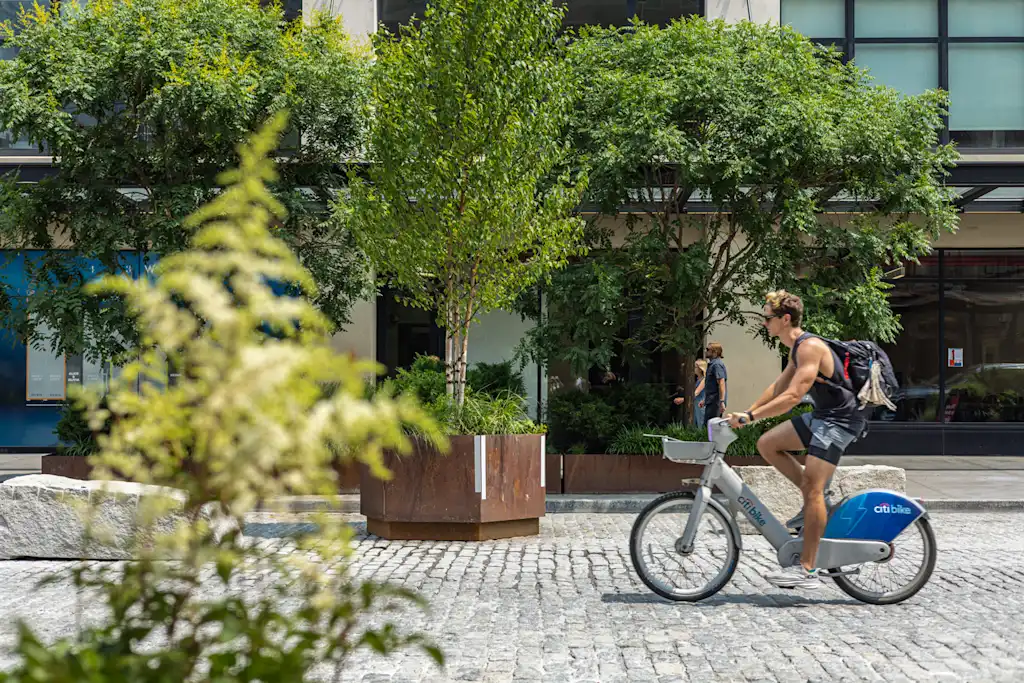
This framework will allow them to do more with the space, such as programming concessions and enabling year-round outdoor seating. This policy lever is a notable difference between BID’s roadway installation and other street furniture; Dining Out NYC and Street Seats are seasonal.
The team referenced outdoor dining guidelines to determine a few key features for the parklet design, including aligning the deck flush with the curb for accessibility, leaving room beneath it for stormwater to flow unobstructed, and specifying removable decking.
But there are a few key departures, porous perimeters so pedestrians can access them from the street side—a subtle detail that encourages mid-block crossing—and seating options that vary from parklet to parklet. “We follow guidelines, but we also break them a little,” Rivas Plaza says.
Visitors to the 14th Street Promenade will notice that the experience within each parklet is different. Street Plans furnished an installation underneath a tree with lounge chairs thinking that tired shoppers might want to kick their feet up in the shade, while another parklet closer to the stairs leading to the High Line riffs on stools at a bar thinking that folks who are entering or exiting just need a quick landing spot while they figure out their next move.
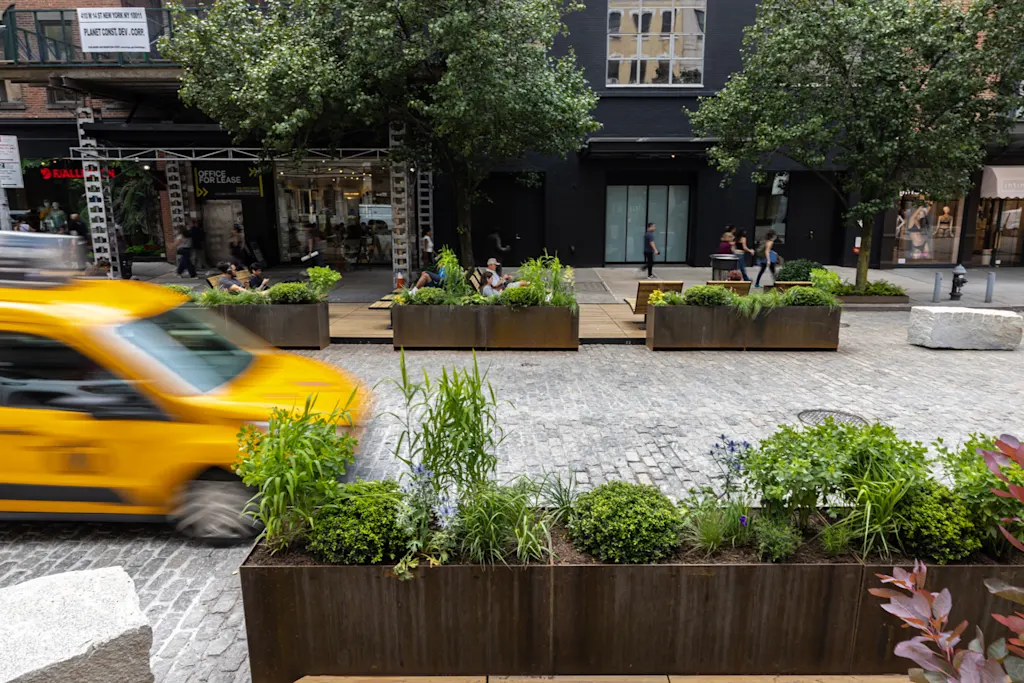
Other parklets have tiered benches interspersed with planters that offer privacy while another features a dining table—a great spot to bring lunch from food trucks down the block. “We wanted to see different kinds of seating because within New York City we have a very strict palette,” Rivas Plaza says. “We have foldable tables and chairs, which are great, but how do we make spaces that allow us to do different activities?”
That said, the overarching mantra of the streetscape is comfort. She’s seen people sit on the granite boulders that separate the new pedestrian zone from traffic, which signals to her that the design is successful since people feel safe and welcome to hang out.
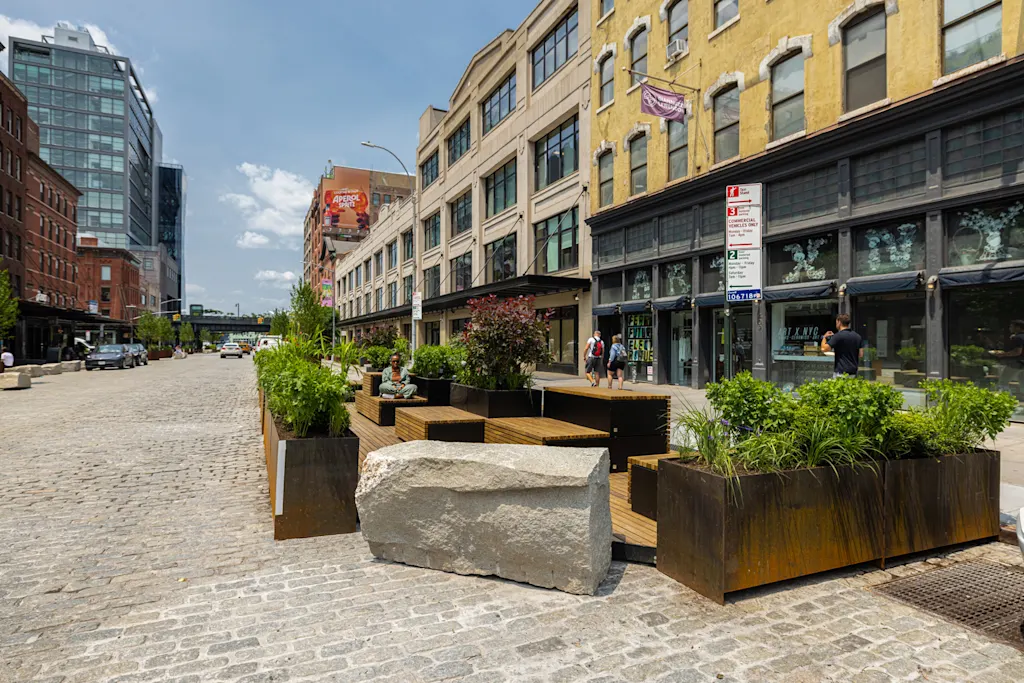
Compared to the rest of the city, the Meatpacking District has fewer traffic collisions, and these experience-driven elements extend an invitation to feel at ease. “It’s like an outdoor living space,” Rivas Plaza says.
High-quality design has helped to convince more businesses in Meatpacking to want these features on their blocks. Washington Street, for example, was reluctant to receive public realm improvements. That changed after the BID temporarily relocated the planters in 9th Avenue in order to make room for the Great Elephant Migration sculpture installation.
“We love being flexible, the idea to stand something up, see if it works, and if it doesn’t explore how we can change it,” LeFrancois says. Over the next few weeks and months, he’ll closely observe how visitors to the District use the parklets and make changes accordingly. Eventually, he hopes to build a beer garden under the High Line.
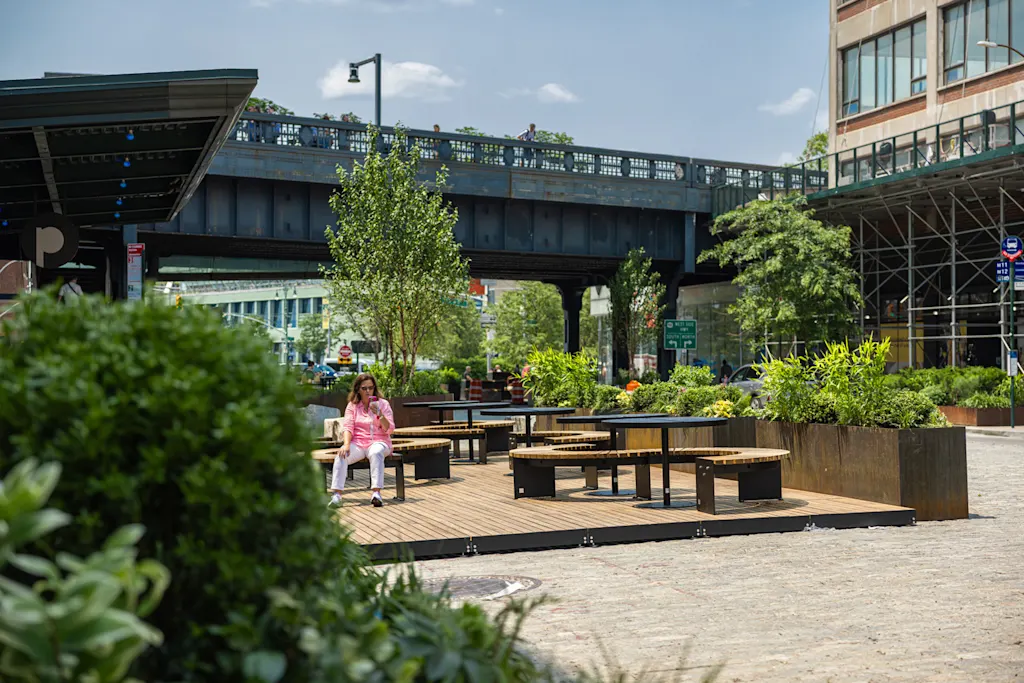
Can This Work Expand Across the City?
The Meatpacking District is rare in that it has a powerful, active, and well-funded BID that is able to build coalitions necessary to advance streetscape improvements—and has been doing so for more than a decade. Through high-quality design, extensive engagement with stakeholders, and an interest in experimenting and iterating, it shows what is possible when there is the rare alignment of progressive ideas, political will, and budget.
But this work is expensive. LeFrancois says that the BID’s FY ’26 operating budget is about $4.4 million ($3.6 million of which comes from a special assessment levied on property owners) and just over one third of that goes to operations and the public realm, which includes landscaping, pedestrian management, and sanitation. Plaza activation and programming revenue also helps pay for public realm improvements, which is not included in that figure.
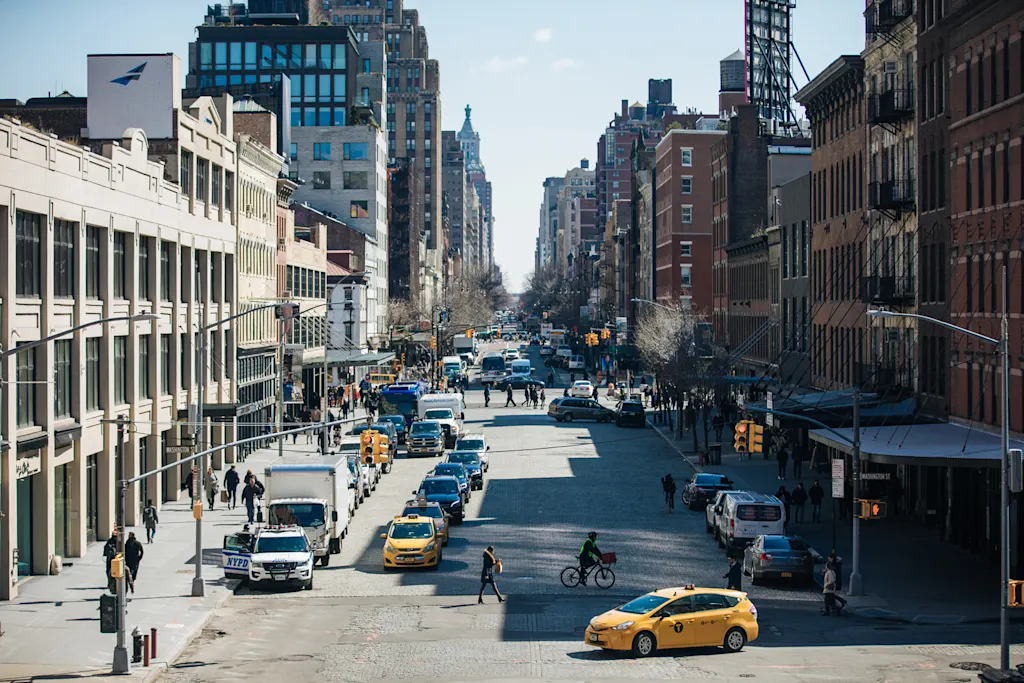
The BID paid for the planning, design, and construction of the promenade, which came to nearly $1 million—a sum that is out of reach for most neighborhoods, even those with BIDs. According to LeFrancois, the Meatpacking is considered “medium sized” compared to the 77 other BIDs in New York.
Meanwhile, the geography of the neighborhood lends itself to pedestrianization work. It’s off to the side relative to the rest of the city and has busier streets, like the West Side Highway and 9th Avenue, around its perimeter but none that slice through its center—a physical condition that makes plazas easier to build.
Additionally, its narrow one-way streets don’t align with the grid and they are often paved in cobblestone, a bumpy material that encourages slower driving and that pedestrians enjoy for its charm. When it wants to fully pedestrianize the neighborhood for special events, the BID only has to close four intersections to car traffic.
Plus, the 14th Street Busway, which limits traffic on the crosstown street between 3rd and 9th Avenues, has also encouraged more pedestrianization. Last week, the agency announced a public-private partnership with the Meatpacking and Union Square BIDs to pedestrianize more of 14th Street, bringing the philosophy of their neighborhood-focused work to a whole corridor. And recently, it expanded the groups that can partner with them beyond BIDs through its Public Space Equity Program.
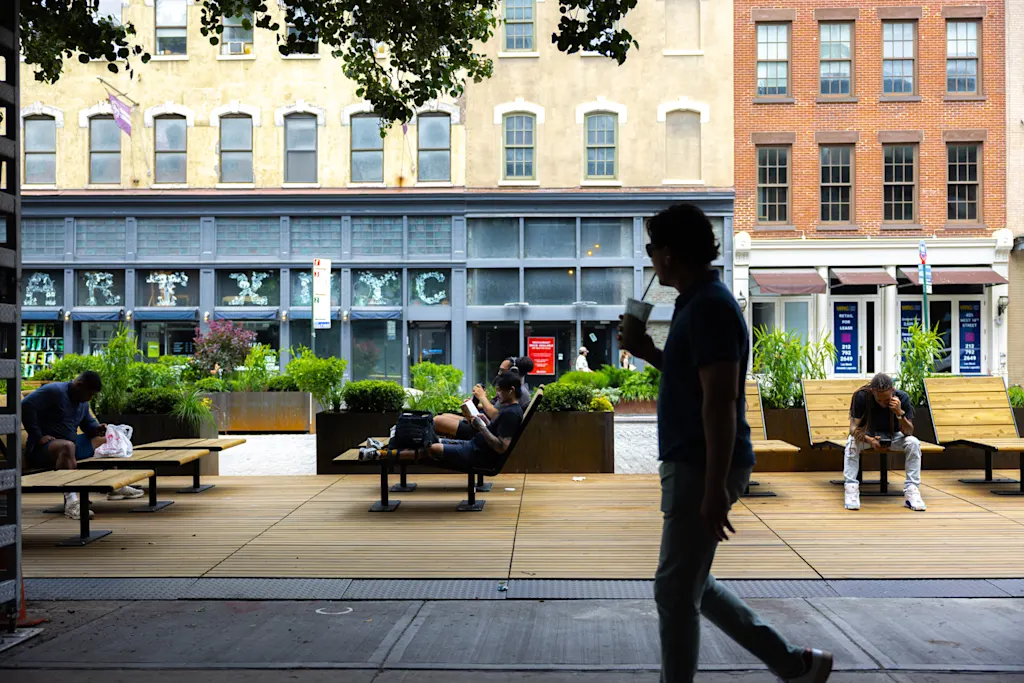
The success of pedestrianization programs in the neighborhood has helped DOT understand how collaboration with private organizations can help encourage more public realm improvements. Recently, it expanded the groups that can partner with them beyond BIDs through its Public Space Equity Program.
To Vega-Barachowitz, a crucial element of the public realm work is reorienting the conversation about rebalancing streets from one about business to one about experience.
“It sets a paradigm and provides a cue to other places that this is more than just about creating space for restaurants to have overflow,” he says. “It’s about creating more space for pedestrians and for people to sun themselves on a wooden deck in one of the most beautiful places in New York City.”
The 14th Street Promenade arrives at a thrilling moment for the city, as congestion pricing has led to a mass decline in traffic. With fewer cars on the street, what comes next? “The big messaging here is you sometimes just need some pilot programs going into effect and learn from them,” Farhi says.
What's Your Reaction?
 Like
0
Like
0
 Dislike
0
Dislike
0
 Love
0
Love
0
 Funny
0
Funny
0
 Angry
0
Angry
0
 Sad
0
Sad
0
 Wow
0
Wow
0




